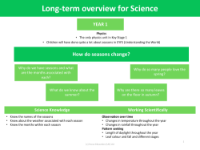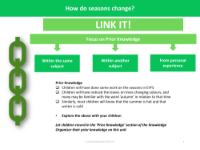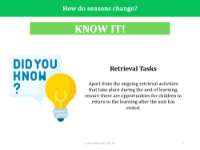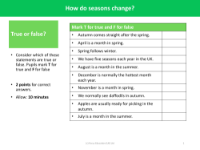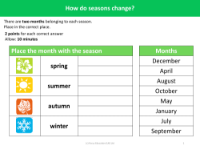Knowledge organiser - Seasonal Change - Year 1
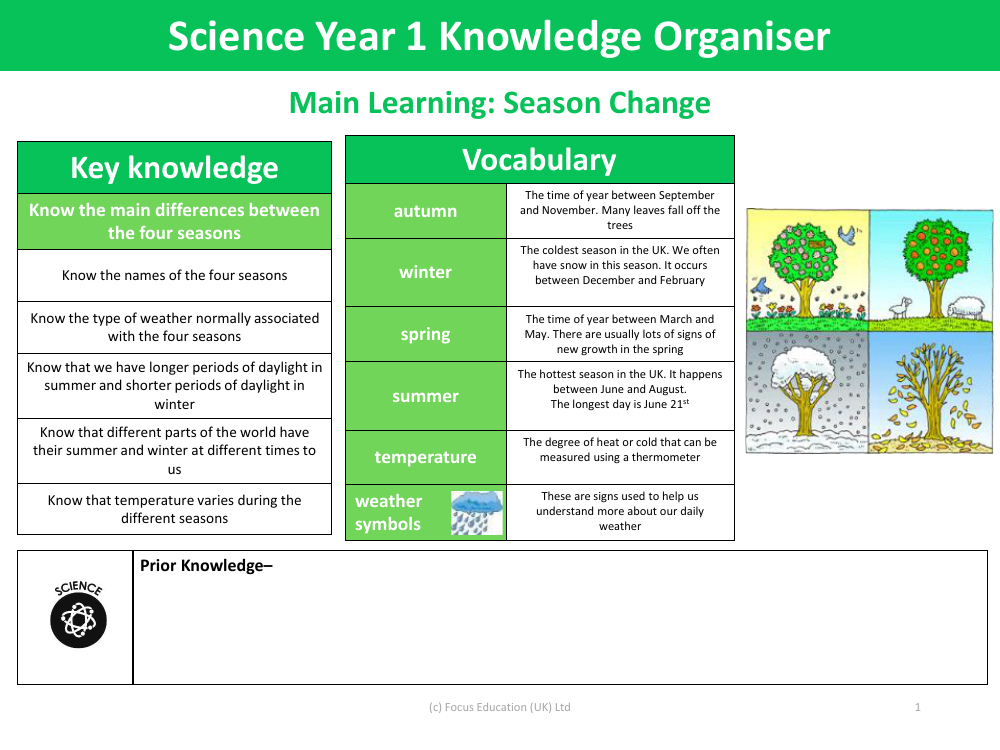
Science Resource Description
This knowledge organiser is designed for Year 1 students to understand the concept of seasonal change. It introduces the vocabulary associated with the four distinct seasons in the UK, providing a foundational understanding of each. Autumn is described as the period between September and November, characterized by falling leaves. Winter, the coldest season, typically brings snow and spans from December to February. Spring is a time of renewal and growth, occurring between March and May. Summer is the warmest season, lasting from June to August, with the longest day falling on June 21st. Additionally, the term 'temperature' is explained as a measure of heat or cold, which can be assessed with a thermometer, while 'weather symbols' are signs that depict daily weather conditions.
The key knowledge section outlines the essential information students should know about the seasons. It highlights the importance of recognising the main differences between the seasons, knowing their names, and understanding the typical weather patterns associated with each. It also teaches that daylight duration varies, with longer days in summer and shorter days in winter. The organiser points out that different parts of the world experience summer and winter at opposite times to the UK and that seasonal temperature changes are a natural part of the yearly cycle. This knowledge organiser sets the stage for Year 1 students to grasp the main learning theme of seasonal change, building upon any prior knowledge they may have.

